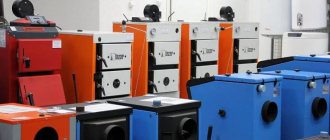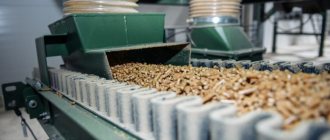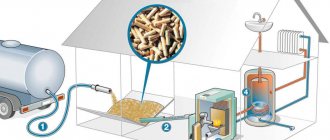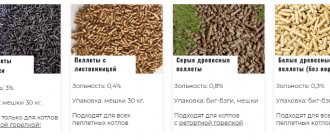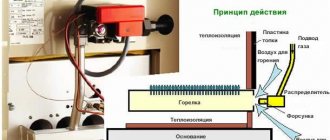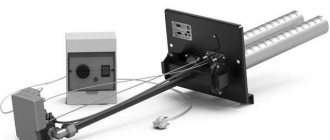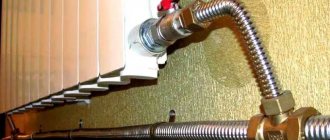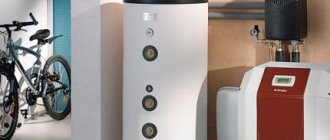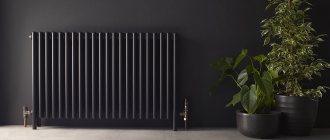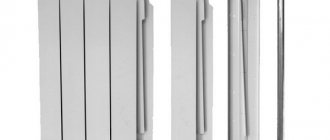Since tariffs for electricity, gas and solid fuel are constantly rising, most homeowners have to look for new ways to save.
These methods include the use of granular fuel - pellets. People call them granules. It is a renewable fuel that meets all environmental requirements. They heat:
- cottages;
- individual buildings;
- industrial enterprises.
The material is suitable for use in fireplaces and specialized boilers.
Types of pellets
Granules are divided into the following types:
- coal;
- woody;
- peat;
- vegetable;
- straw;
- corn (mostly leftovers are used);
- from chicken manure;
- from solid household waste;
- from waste paper.
Each presented species requires separate consideration.
Wood pellets
This type of pellets is considered the most common. It is made from hardwood and softwood. In the production of such fuel pellets, almost all waste generated during the woodworking process is used, namely:
- shavings;
- sawdust;
- wood flour;
- trimmings;
- croaker
Even waste that contains tree bark is also used in the production of pellets, called “gray”. They are distinguished by their ash color, are packaged in large volumes and are used in powerful boiler houses. The cost of fuel in this case is much more important than the ash content.
Positive qualities of wood pellets:
- Possibility of storage under a canopy that protects from moisture.
- Due to their small size, the granules take up little space and are easy to transport.
- Wood pellets are not self-igniting material. To use such fuel, you need to install a pellet boiler.
- The granules are easy to use and do not have a strong odor.
- Low cost: 5.5 thousand rubles per ton. This is much more profitable compared to other types of fuel.
Coal granules
The latest technologies are used to produce such pellets. We are talking about spiral pressing of coal mined in Kuznetsk. These pellets are used for heating:
- Houses;
- baths;
- saunas;
- garages.
Such pellets burn perfectly in a stove of any design. They are suitable for boilers that require solid fuel, and it does not matter where the heating device was manufactured: in Russia or abroad.
Peat granules
This type of material is calibrated pellets made from natural raw materials - peat. There are no binders in the granules. The result is fuel that is harmless to the environment. The maximum length of the granules does not exceed 50 mm, and their diameter is usually 12 mm.
The special value of peat pellets is:
- high calorie content;
- stable energy;
- efficiency.
Thanks to these qualities, the use of such granules becomes much more profitable than heating with ordinary coal or other fuels.
For example, when 1 ton of peat pellets is burned, thermal energy is released comparable to the combustion of 685 liters of fuel oil, 1.6 tons of wood, 475 m³ of gas or 500 liters of diesel fuel.
Production of peat granules
The extracted rock is dried to obtain a moisture content of 16%. These raw materials are then broken into small pieces in crushing machines. Special pressing equipment is used to produce granules.
Natural peat contains all the necessary binders, so when making pellets there is no need to add additional components.
In Russia, this type of fuel became known only recently. Only today has the domestic consumer been able to appreciate peat pellets, although the production of such pellets began in the middle of the last century. At that time, residential buildings were heated with this fuel.
Comparative characteristics of fuel types
First, about the price of energy resources. The table shows the cost of fuel at Moscow prices:
| Raw materials for pellets | Cost from 20 tons with shipment from warehouse | Price from 1 ton with shipment from warehouse |
| Sunflower husk pellets | From $50 (3300 rub.) per 1 ton | From $70 (4500 rub.) per 1 ton |
| Wood light pellets from 6 mm | From $100 (6500 rub.) per 1 ton | From $105 (6800 rub.) per 1 ton |
| Wood light pellets from 8 mm | From $95 (6000 rub.) per 1 ton | From $100 (6500 rub.) per 1 ton |
| Birch briquettes | From $90 (5800 rub.) per 1 ton | From $95 (6000 rub.) per 1 ton. |
Comparative characteristics of fuel costs:
The use of granular energy carriers is noticeably more profitable than the use of traditional types of raw materials. However, the costs of maintaining the equipment will be higher, but this figure is offset by savings when purchasing briquetted raw materials.
Pellet varieties
- Higher. This fuel belongs to the premium class. Such granules received an additional name – “white”. Since high-quality raw materials are used in their production, the cost of fuel is higher than other types. They are usually available in several colors: light brown, white, beige. Such granules are made from oak or beech sawdust. The raw material can be any solid wood.
- Industrial. Since the granules contain tree bark, they differ from others in their dark color. Pellets have a high calorific value, but their ash content exceeds 0.7%. The price of industrial pellets is slightly lower than the cost of premium combustible substances.
- Agropellets , the so-called standard. They are one of the types of industrial granules. For production, buckwheat husks or sunflower stems are used. The pellets are dark in color and their ash content is more than 3%. They are characterized by low calorific value, not exceeding 15 MJ/kg. These granules are inexpensive and are used as fuel for industrial boilers.
When choosing pellets for heating your home, you must take into account the following important points:
- availability of a quality certificate indicating the composition of the granules; it must meet current standards; It is better if such pellets comply with European standards such as ENplus;
- calorific value (not less than 4200 kcal/kg);
- ash content (no more than 0.5-1%);
- humidity (no more than 8-14%).
Features of heating with pellets
In order to use pellets as fuel more efficiently, you need to purchase a special boiler. Pellet boilers operate in an automated mode: fuel pellets are stored in special containers - pellet bunkers, from which they are fed into the boiler using an auger.
If you want to save money and buy gray rather than white pellets, we advise you not to buy a large batch of fuel at once: not all burners can handle them. First, buy a bag and test it. If the boiler is working normally, you can purchase a larger batch. Do the same with agropellets: first test the operation of the boiler with a small amount. But besides the ash content, there may be other problems: these granules do not tolerate transportation well, so already at this stage you will end up with a lot of waste. So it turns out that heating with this fuel, even if the boiler can handle it, is advisable if the production is somewhere nearby.
The ideal pellets for boilers are white. Their composition is usually homogeneous, and the ash content is low. Due to the characteristics of the raw material, the surface of such granules is dense, they crack and crumble less, and withstand transportation better.
Technological process for making granules
Coarse crushing. Crushing machines are used to grind sawdust into flour. Then the material is dried until it reaches 10% humidity, for which special drums are used.
Second grinding. Hammer mills crush raw materials to a maximum size of 6 mm.
dried until it reaches 8-10% humidity in drum or belt dryers.
Pressing. The raw materials are heated to 120 °C and subjected to pressure from a special granulator press. Typically this machine uses several types of dies:
- cylindrical;
- flat;
- roller;
- screw
This miniature granulator press has a productivity of up to 250 kg/hour.
Cooling . This process is performed as needed.
Packaging. According to calculations, to obtain one ton of pellets, you need to have 2.5 m³ of sawdust. Household pellets are packaged in bags with a maximum weight of 30 kg. Such packaging with industrial granules can weigh up to 1000 kg.
A small line, which is based on the OGM-1.5, costs approximately $55,000. The price of industrial equipment will be much higher. In this case, performance comes first:
- 700 kg/h – $132,000;
- 2000 kg/h – $196,000.
Environmental factor
Buying pellets means maintaining a stable environmental background. They are the result of waste recycling, which means they will not harm the atmosphere or people. It is believed that pellets are part of the CO₂ cycle in the environment, that is, they release exactly as much as the tree absorbed during growth.
In the process of burning pellets, the same amount of carbon dioxide is released as formed during the natural decomposition of wood
Note! Waste is used in production, which means that every ton of such fuel keeps trees in the forest safe and sound. And the environment is not polluted by wood processing waste.
What is very important is that emissions into the atmosphere from the combustion of such fuel are not as harmful as if coal and diesel fuel were burned.
The chemical characteristics of pellets depend on the raw materials from which they are made
Main stages of pellet production
Fuel pellets are usually produced on an industrial scale, but nothing prevents you from making pellets yourself. To do this, it is worth understanding what the manufacturing process is.
Pellets can replace firewood
Third stage - cooling
Finally, the finished fuel pellets are sent to cool. At this time, they dry out and gain strength. Small particles that appear during transportation through the technological cycle are separated from the mass of the finished product to give it a marketable appearance.
Depending on the end user, pellets can be packed in large containers or small packages. Also, transportation to the buyer is sometimes carried out by railcars. This happens if the pellets are intended for thermal power plants or boiler houses.
Video on how to make a flat matrix for a granulator
The basis of the granulator - the frame - can be welded from a steel profile of a rectangular section of at least 40x25 mm. Its size will depend on the selected electric motor power. The latter will have to be purchased. But you can make the gearbox yourself, from what and how it is well described and demonstrated in the photo here. This is, of course, not the only option.
The granulator can be mobile, with wheels on the frame
The granulator body is made of sheet metal. It should consist of two parts: sawdust will be loaded into the upper one, and they will fall into the lower one after passing through the matrix. The body can only be cylindrical in shape, with a diameter slightly larger than the matrix for free rotation of the latter. A hole is needed in the lower part, preferably with a gutter, so that the finished pellets can freely pour into a container.
DIY granulator
It is not advisable to weld both parts of the body; cleaning will be difficult. They can be connected with bolts, having previously made ears. The matrix and the shaft with gears are inserted into the housing. The granulator is ready. Now you can make wood pellets for your own pellet boiler at home.
